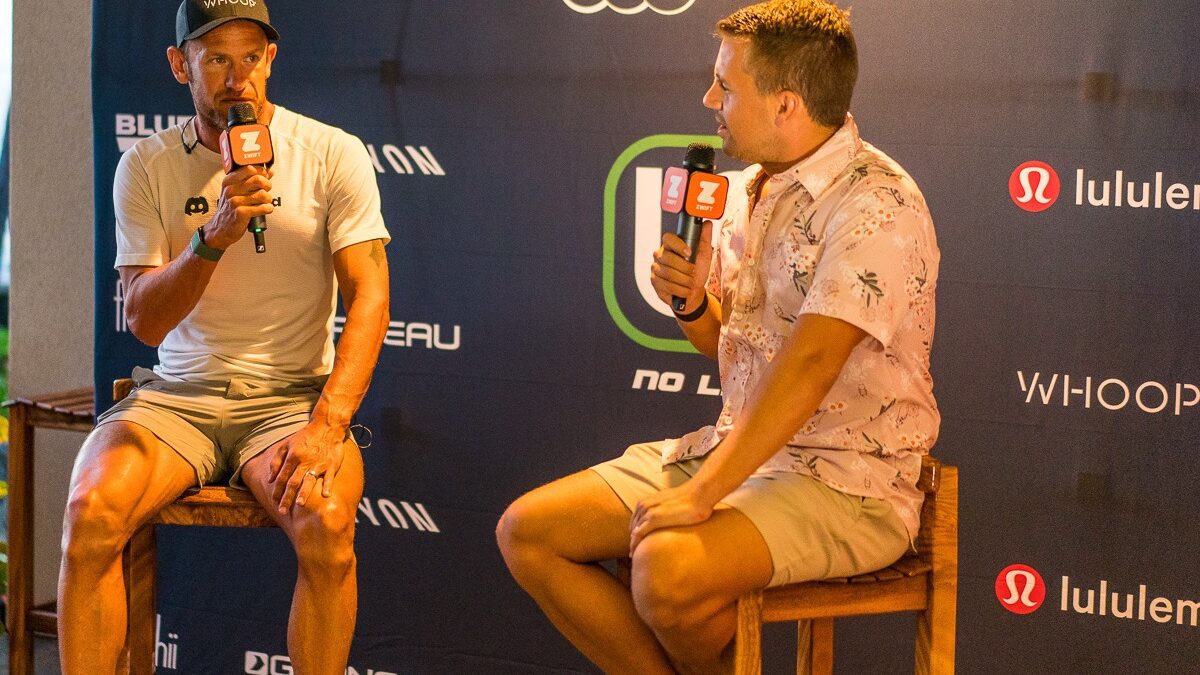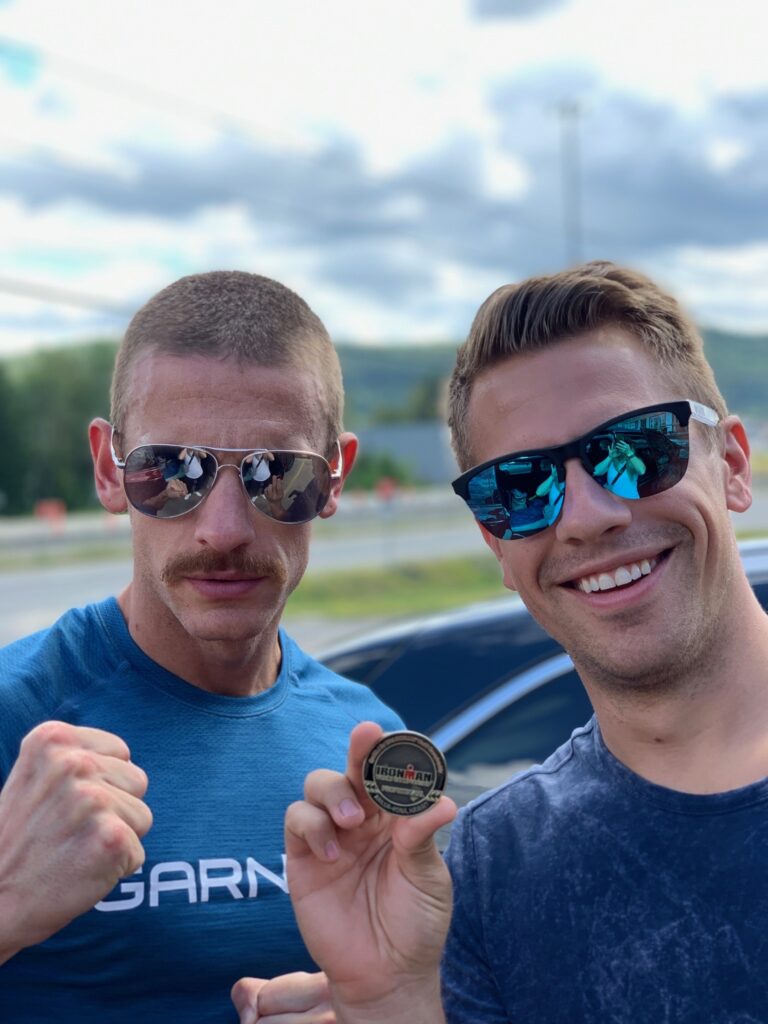Why Lionel Sanders is the most popular triathlete on YouTube
Lionel Sanders and Talbot Cox create the sport's most popular video channel
 Photo by:
Kevin Mackinnon
Photo by:
Kevin Mackinnon
More than a third of the total video views on YouTube around this year’s Ironman World Championship were from Lionel Sanders’ posts. Each video averaged almost 77,000 views, with more than a million people tuning in to keep up with the Windsor, Ont. native. All told Sanders’ YouTube channel has received more than 5.8 million views, and 152 thousand people have subscribed to the channel.
That popularity can’t come from race success alone. Sanders has never won the Ironman World Championship – although he has come second twice. And, while he’s won 32 half-distance and four full-distance races during his illustrious career, there are athletes out there who have enjoyed more success. His incredible background story – Sanders overcame drug and alcohol issues to become one of the world’s premier endurance athletes – certainly helps with his popularity, but that doesn’t explain all the popularity either.
So why is Lionel Sanders the world’s most popular triathlete on YouTube? People flock to the videos Sanders posts because the guy is an open book. In each of the unscripted videos that videographer Talbot Cox puts together, Sanders is more than happy to share is emotions and thoughts. He’s relentlessly tough on himself, and happy to point out his own mistakes and faults. He’s the living embodiment of the challenges all triathletes face and inspires age group triathletes because they can relate so well to the stories the pair tell of Sanders’ training and racing experiences.
The beginning
The success of the channel could be the end of this story. I could tell you how the pair came to create the channel, outline all the success, and then call it a day. I will provide some of that history, but there’s a lot more to this story than simply stats.
So how did they get to this point? Sanders started his own YouTube channel almost a decade ago and would do a couple of videos a year along with his long-form blogs that he’s post on his web page.
Cox, originally from Oklahoma City, went to the triathlon hub of Boulder, Colorado, to attend software development school in 2016. Eventually he started dating pro triathlete Ellie Salthouse and started taking photos and doing training videos with athletes. In 2017 he posted his own Kona series of videos about pro athletes racing at the Ironman World Championship, and was asked by Garneau to create a two-part training series with Sanders. He’d got to know Sanders and his wife, Erin, at various races around the world – Salthouse and Sanders would often compete at the same events.
By this point Cox was becoming well known with many pro athletes. After he met Pat Lemieux, 2016 Olympic gold-medalist Gwen Jorgensen’s husband, at the Island House triathlon in the Bahamas, he started a video series with Jorgensen that was to follow her journey as she sought to qualify for the marathon at the 2020 Tokyo Games. The first video for that series came out in February, 2018. A month later he produced a video for Mirinda Carfrae and Tim O’Donnell, one of the sport’s most popular couples.
In July, 2018, Cox got a call from Sanders. Their Garneau videos had been a success and, after his runner-up finish at the Ironman World Championship the year before, Sanders felt that people might be interested in following his journey to trying to win the world title. Two days later Cox was on a plane to Windsor to meet. Next thing he knew, he had added Sanders as a client, and was suddenly producing a video a week for Jorgensen, Carfrae and O’Donnell and Sanders.
All of which started to add up. Cox was living out of a suitcase and working all hours to keep up. As Sanders and Cox began to become closer and closer friends, the Canadian wanted to ease the workload on his friend. He asked Cox how he could make their work together a full-time gig.
“I had become best friends with him and Erin,” Cox says. “Once you’re in his inner circle, you’re in forever. Lionel is the most loyal client I’ve ever worked with. It’s the same with his sponsors.”
In 2020, as the triathlon world shut down because of the COVID-19 pandemic, Cox expected that they would slow down their video production. Instead, Sanders offered him a raise.
“He wanted to give people content and give people hope during the pandemic,” Cox says.

Just the start
OK, so we know how things got started. Now we’ve got Cox working full time for Sanders, creating regular videos for the YouTube channel. He’s become an integral part of “Team Sanders,” led by Erin (“The one who calls the shots,” Cox says). As the subscribers and views ballooned, Cox’s salary could now come from the YouTube proceeds. It’s a winning formula.
Except, for both Cox and Sanders, it’s just the beginning.
“Lionel and I both see this – we are only at the start of the channel,” Cox says. “He’s so passionate about triathlon changing his life. He wants to use his platform to help others change their lives. He wants to document that so other people can see.”
Sanders has already expressed that he’d like to “accomplish everything that he can do in triathlon” then set his sights on some other athletic endeavours. He’d like to compete for Canada in time trial events, possibly even at the Olympics. Then there are other endurance events he’d like to tackle.
“This is only the start of Lionel’s journey,” Cox says. “You can do more than just inspire people to get off the couch.”
That inspiration goes a long way, though. As does the formula the pair have come up with that has helped with the success of the videos. Cox says he realizes now that camera work is the least important aspect of the process.
“Most important is the charisma of the person in front of the camera,” Cox says. “They have to be 100 per cent committed to what they’re doing. Consistency is important, too.”
The success of the platform has led lots of other triathletes to reach out to Cox for advice, which he’s all too happy to provide. As far as he’s concerned, giving advice only helps their channel. “When someone else grows in this sport, the whole sport grows,” he says.
Another key to the success of the videos, for both spectators and sponsors, is the authenticity. There aren’t many product plugs, but there remains lots of exposure for Sanders’ partners. And, most of all, Sanders never pulls any punches. Especially when it comes to evaluating his own performances.
In his post-Kona video from this year, Sanders made it clear that he needs to take a step back from championship racing until he can improve his swim split enough to come out of the water closer to the lead pack. There were no excuses. He’d had a tough day and was open about his own limitations which had led to that. It was a similar message to the one he put out in 2016, shortly after another tough day in Kona, and a year out from his runner-up finish on the Big Island.
It’s that honesty, and then the ability to come back and perform, that seems to inspire his fans.
“I guess people relate to Lionel and deeply appreciate the content, because at the end of the day this is how everyone ‘s life is – a rollercoaster,” Georgi Petrov wrote in the comments for the video. “A fight. A series of ups and downs. This, in my opinion, is the true inspiring image of this man – although he’s a man like you and me and occasionally struggles, he comes back to conquer.”
It’s hard to imagine that he won’t come back “to conquer,” as Petrov suggests, but even if he doesn’t, it appears that lots of triathletes are keen to watch him try.
